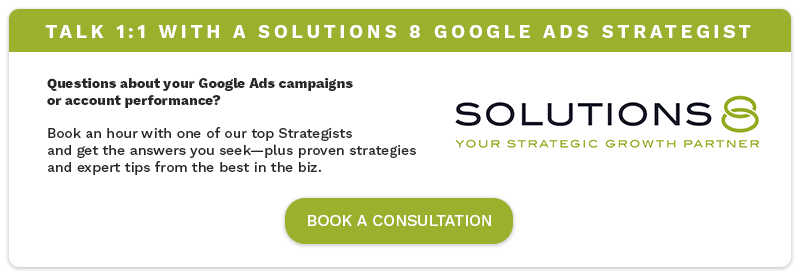Google Ads is a complex platform with many different bidding strategies to choose from.
In this blog, we will discuss Target Impression Share and Manual CPC bidding- what each is about and which one you should use depending on your campaign goals.
Content:
Target Impression Share Bidding Strategy
When To Use Target Impression Share Bidding Strategy
When Not to Use Target Impression Share Bidding Strategy
Manual CPC Bidding Strategy
Manual CPC with Enhanced CPC
Manual CPC without Enhanced CPC
Target Impression Share Bidding Strategy
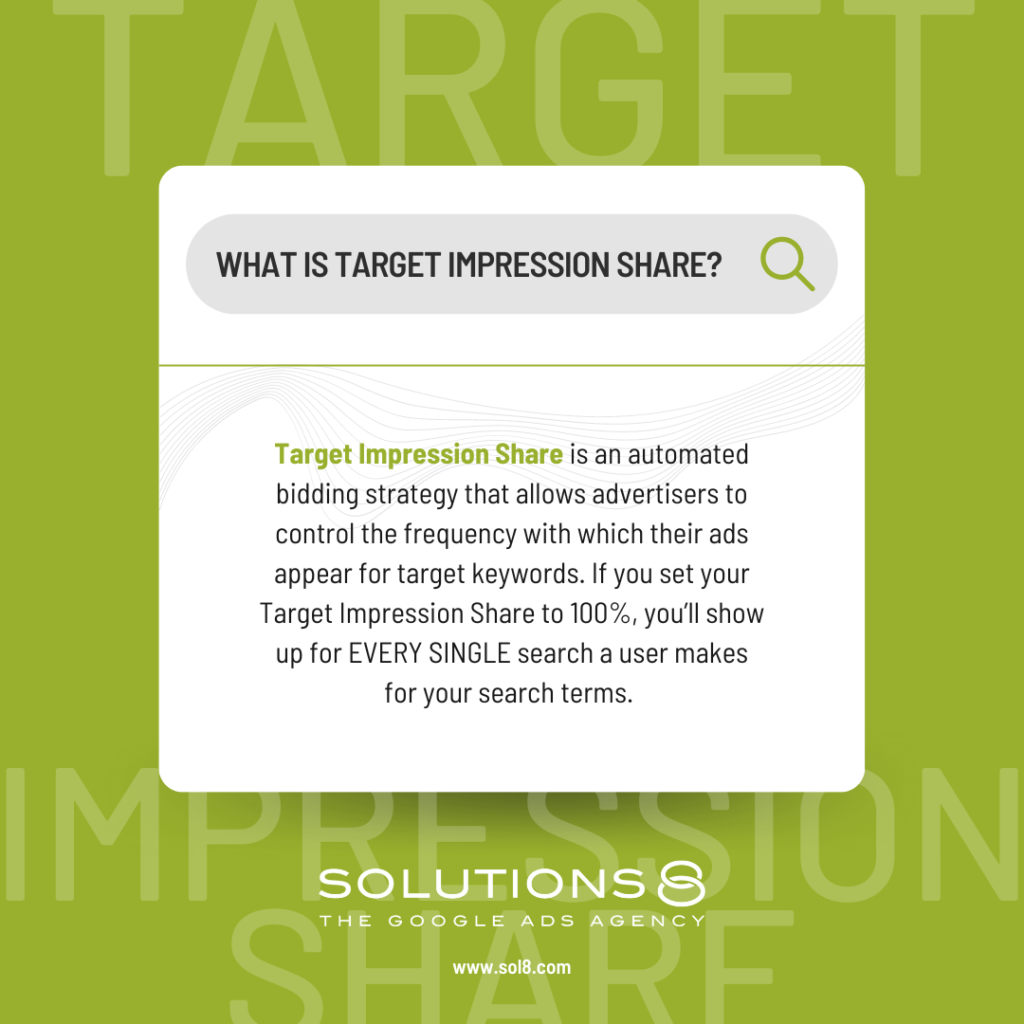
Target Impression Share is an automated bidding strategy that allows advertisers to control the frequency with which their ads appear for target keywords. If you set your Target Impression Share to 100%, you’ll show up for EVERY SINGLE search a user makes for your search terms.
You have different placement goals for this bidding strategy:
- absolute top of the page,
- on the top of the page, or
- anywhere on the page of Google
To sum it up, when using this Google Ads bidding strategy, your campaign will prioritize top placement on Google’s SERPs.
When to Use Target Impression Share Bidding Strategy
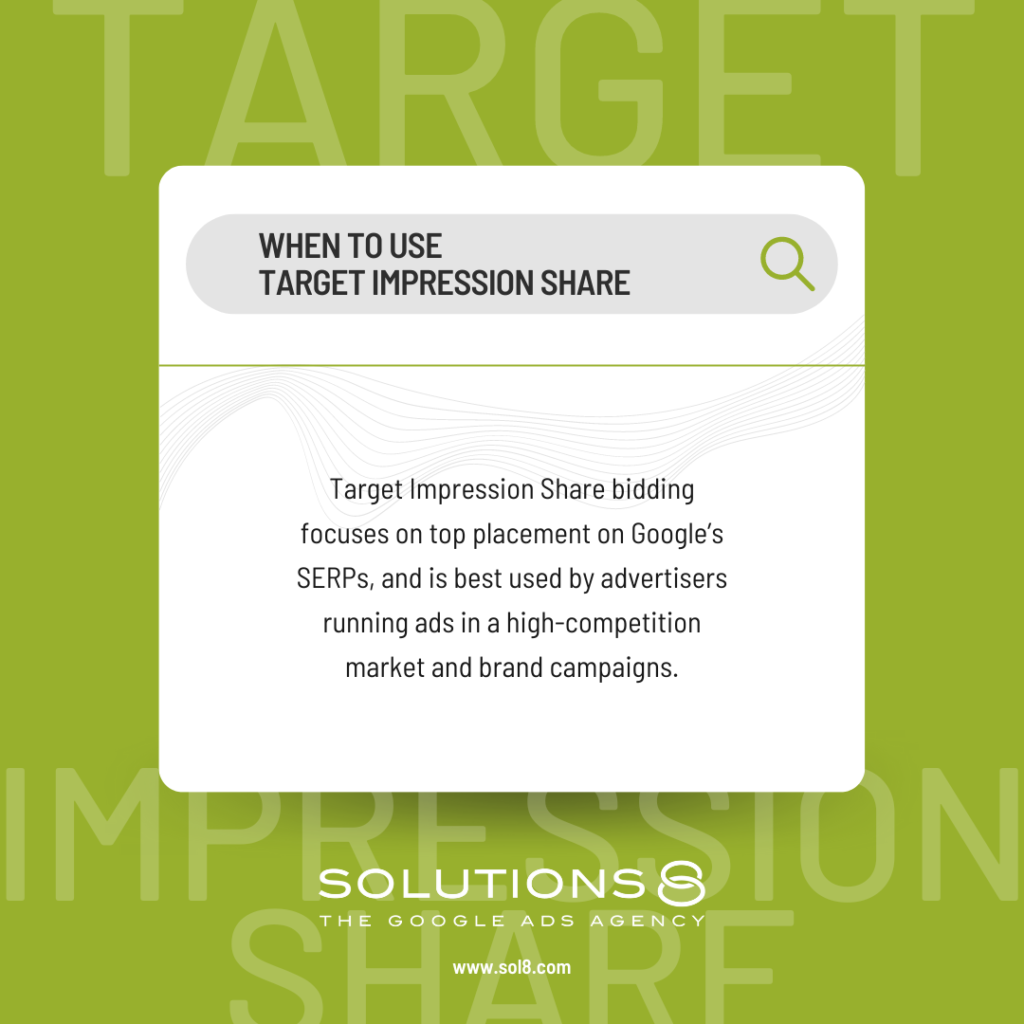
Target Impression Share bidding focuses on top placement on Google’s SERPs, and is best used by advertisers running ads in a high-competition market and brand campaigns.
For example, your competitors are aggressively bidding on your brand terms, Target Impression Share bidding can help. It’s because showing up on top of Google’s results page can give you the increase in brand awareness and authority you need.
Also, if you have a specific keyword that’s related to your business and you want to show up every time or majority of the time when someone searches for that term, this Google Ads bidding strategy can help you.
That being said, Target Impression Share bidding is best for brand campaigns.
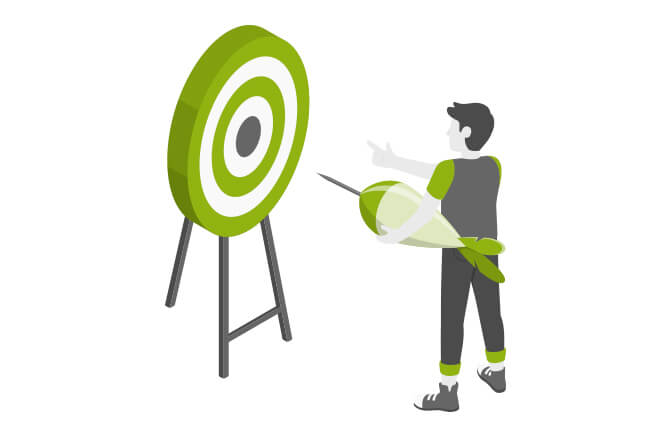
When Not to Use Target Impression Share Bidding Strategy
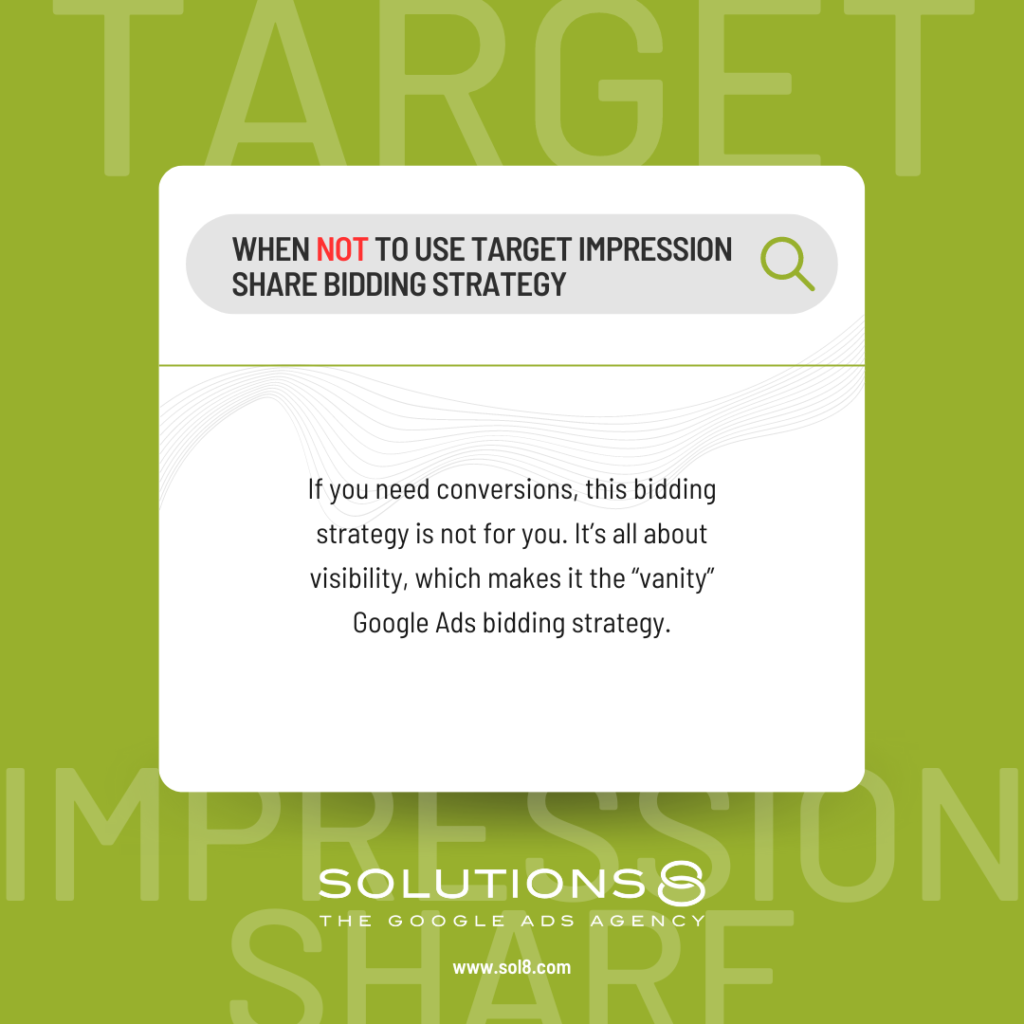
If you need conversions, this bidding strategy is not for you. It’s all about visibility, which makes it the “vanity” Google Ads bidding strategy.
Target Impression Share bidding strategy is John’s least favorite bidding strategy because it doesn’t care about conversions.
Also, if you want a bidding strategy that can easily adjust to your goals, you should not use Target Impressions Share bidding. It takes longer to adjust compared to other bidding strategies
Manual CPC Bidding Strategy
With Manual CPC bidding strategy, advertisers have the power to control their ad spend by setting a maximum price for each click.
This level of control can lead to better value for money as advertisers pay only for interested viewers who actually click on the ad.
Overall, manual CPC bidding offers advertisers greater control, targeting, and flexibility in their advertising efforts, leading to potentially higher returns and a more successful campaign.
There are two ways you can use Manual CPC bidding- with or without Enhanced CPC, let’s discuss each.
Manual CPC with Enhanced CPC

Manual CPC with Enhanced CPC is an audience-based and conversion-focused strategy.
One potential issue is that the automatic bid adjustments made by Enhanced CPC can sometimes become overly aggressive, particularly when attempting to optimize for conversions or conversion value.
This can lead to higher-than-intended spending on certain keywords, and may not always result in a significant increase in conversions.
This is why it’s important to carefully monitor your campaign performance when using this strategy.
Additionally, it’s crucial to have a thorough understanding of your target audience and conversion goals before implementing Manual CPC with Enhanced CPC.
Without a clear strategy and understanding of your audience, the automatic bid adjustments may not effectively align with your overall campaign objectives.
This bidding strategy is similar to maximized conversions, you just set the minimum it can go down to.
Just remember that Manual CPC with Enhanced CPC cancels out “manual.”
Manual CPC without Enhanced CPC
In Manual CPC without Enhanced CPC, the advertiser has full control over bid amounts.
This allows for more targeted and strategic placement of ads, rather than relying on automatic bids that may not align with the goals of the campaign.
This approach also allows for precise budget management and can prevent overspending on certain keywords or placements.
Additionally, this Google Ads bidding strategy is great for experimentation and adjustment of bids based on performance data, rather than relying solely on the algorithm to determine optimal bids.
Manual CPC without Enhanced CPC may require more time and effort from the advertiser, but it can ultimately result in a more successful advertising campaign if applied the right way.
Lastly, one thing to keep in mind is that Manual CPC without Enhanced CPC is not a conversion and audience-based strategy; it focuses on placement.
If you want to know when you should and shouldn’t use the Manual CPC bidding strategy as well as that of other bidding strategies, you can read more about it in our Google Ads Bidding Strategies Overview blog.
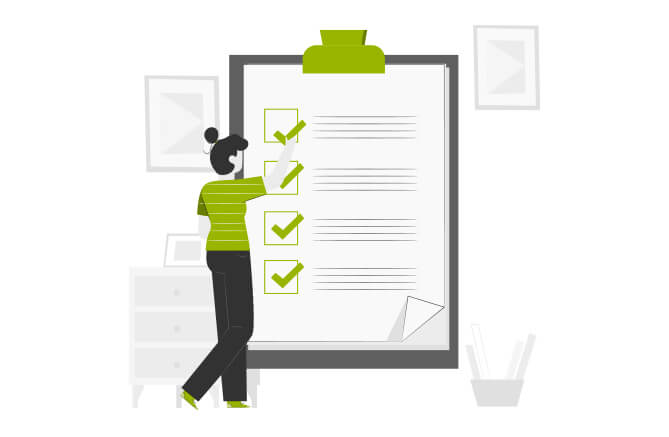
So when should you use Target Impression Share bidding and Manual CPC bidding?
Well, it really depends on the specific goals and priorities of the advertiser.
If visibility and brand awareness are the main priorities, then Target Impression Share may be the appropriate strategy.
However, if conversion goals are the main focus, Manual CPC bidding may be a better fit.
Author
Joan is the YouTube Growth Manager at Solutions 8. When she’s off the clock, you’ll find her chilling with her 10 fur babies, pushing her limits in CrossFit sessions, or basking in the serenity of the beach.
 Joan Porio
Joan Porio